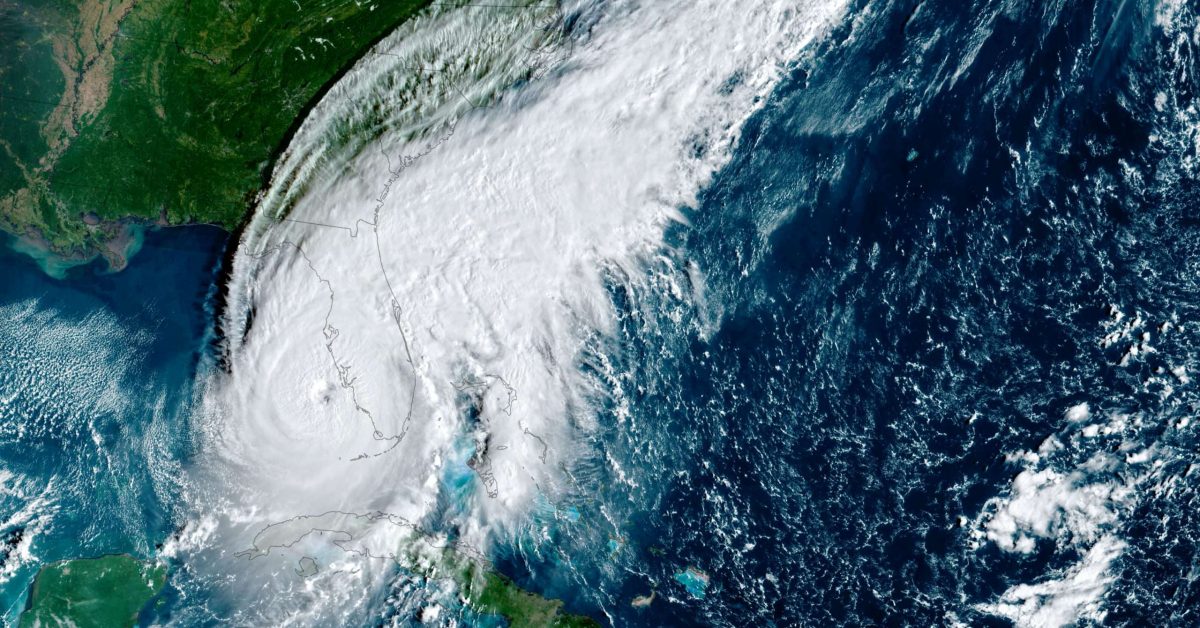So much moves so fast, yet so slow. Time flies, as they say. But for about eight hours Wednesday, Sept. 28, time stands still as Hurricane Ian pounds the shoreline and changes Southwest Florida forever.
In the seven days that follow, a region, a state and a nation also begin to move fast. Residents, business owners and political leaders pick up some of the pieces, try to make sense of unimaginable carnage and begin rebuilding bridges.
Hurricane Ian’s 155 mph winds, up to 15 feet of storm surge and up to 30 inches of rain wash away all sorts of bridges. There are the literal bridges connecting the mainland to the barrier islands. And there are the figurative bridges, the ones that connect hopelessness to hope.
More than 100 people die from the storm, with about half the deaths in Lee County—which orders evacuations for the barrier islands and southern Cape Coral at 7:56 a.m. Tuesday, a time-stamped email from the county shows, about 31 hours before Ian’s landfall. More than 1,000 people get rescued. Many of the survivors escape with their lives, but they lose all their worldly possessions.
“I heard you were a hugger,” Rexann Hosafros says to President Joe Biden. It’s the Wednesday after the storm, a full week later. They’re standing in front of the wreckage of the Dixie Fish Co. and Bonita Bill’s on San Carlos Island, across Matanzas Bay from the most intense destruction on Fort Myers Beach.
The commander in chief turns into the comforter in chief. He removes his dark Ray-Ban aviator shades, and he looks down and into the eyes of the Fort Myers Beach vice mayor. Just as Biden pivots in his role as president, Rexann Hosafros shifts as well. She changes from an elected official to a victim of Hurricane Ian’s wrath. She has lost her house and her car, and she’s living on the mainland in a Comfort Suites hotel.
Biden hugs her.
The president and Florida Gov. Ron DeSantis appear to put aside their political feuds. They do not hug, but they shake hands. They speak at length after viewing some of Ian’s fiercest damage from a helicopter tour earlier that afternoon.
“Folks, look, we have a long road ahead of us rebuilding entire communities from the ground up,” Biden says later during his speech. “We’re here today because we wanted to tell you in person that we’re thinking of you, and we’re not leaving. We’re not leaving until this gets done, I promise you that. You’ve got to start from scratch. You’ve got to move again, and it’s going to take a lot of time. Not weeks or months. It’s going to take years for everything to get squared away in the state of Florida to fully recover and rebuild.”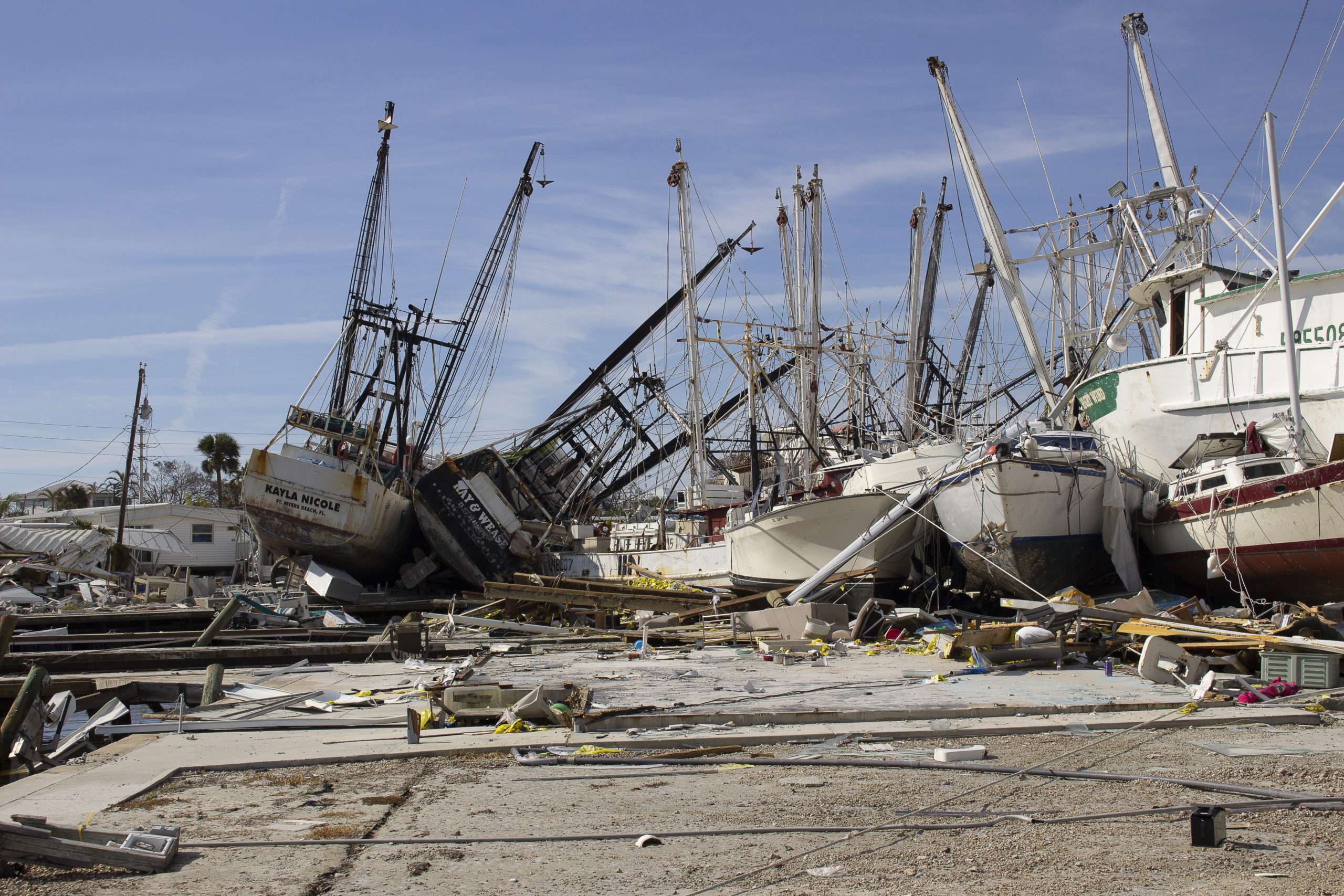
FORT MYERS BEACH BUSINESSES VANISH
Fort Myers Beach loses just about everything. Every business suffers catastrophic damage. Many businesses on the beach wash away during the storm surge.
The ground floor of the Lani Kai hotel, a fixture of Fort Myers Beach spring breakers since 1978, is hollowed out, leaving little left but a concrete shell, its future operations in question.
The Sea Gypsy, a charming and quaint four-unit hotel on the beach side: Gone. The owner, Jackie Liszak, is also the president of the Fort Myers Beach Chamber of Commerce. She also meets Biden. She expresses gratitude that DeSantis and Biden appear to be putting aside political grandstanding.
“The wooden ramp, that’s all that’s left,” Liszak says of her hotel. “Right now, we’re America. There are no politics right now. They’re talking now, and they’re doing what’s right for us.”
Times Square, including the Dairy Queen in which generations of Southwest Florida children grew up enjoying ice cream during days at the beach: Gone.
Shucker’s at the Gulfshore and The Cottage bar and restaurant: Gone.
Some structures aren’t gone. Although the construction site looks like a disaster, the concrete walls of the Margaritaville Resort remain intact. So does the pedestrian bridge, elevated above Estero Boulevard. It’s another bridge that’s both literal and figurative, because it’s another bridge connecting hopelessness to hope.
“We didn’t suffer structural damage,” says Tom Torgerson, the co-CEO of TPI Hospitality, which is building the resort. He evacuates the island at the 11th hour, driving all the way to Miami. He gets back in time to see Biden and DeSantis. “We have a very massive cleanup ahead of us. In some ways, we’re so fortunate compared to our neighbors. There’s a lot of emotions flying over there. I’ve never been so busy in my life, juggling so many balls in the air.”
Torgerson’s three-story home, on the bay side of Estero Island, remains intact, too. He knows he fares so much better from Ian than others.
Home after home, business after business on Fort Myers Beach disappear. The surge swallows them.
“We just had our centennial celebration last year, and now it’s gone,” says Brian Nagle, general manager at The Cottage. It’s had the same ownership for 50 years. All the restaurant’s 116 employees survive the hurricane, but about 10% of them lose their homes.
“There’s so much to deal with right now,” Nagle says. “Hopefully, we rebuild. I’d love to. We’re looking into all avenues at this moment. But there’s just too much to go over. Everything was taken from us. Just everything. It took about 48 hours, but we were able to account for every single person. A lot did lose everything. They lost everything but the clothes on their back.”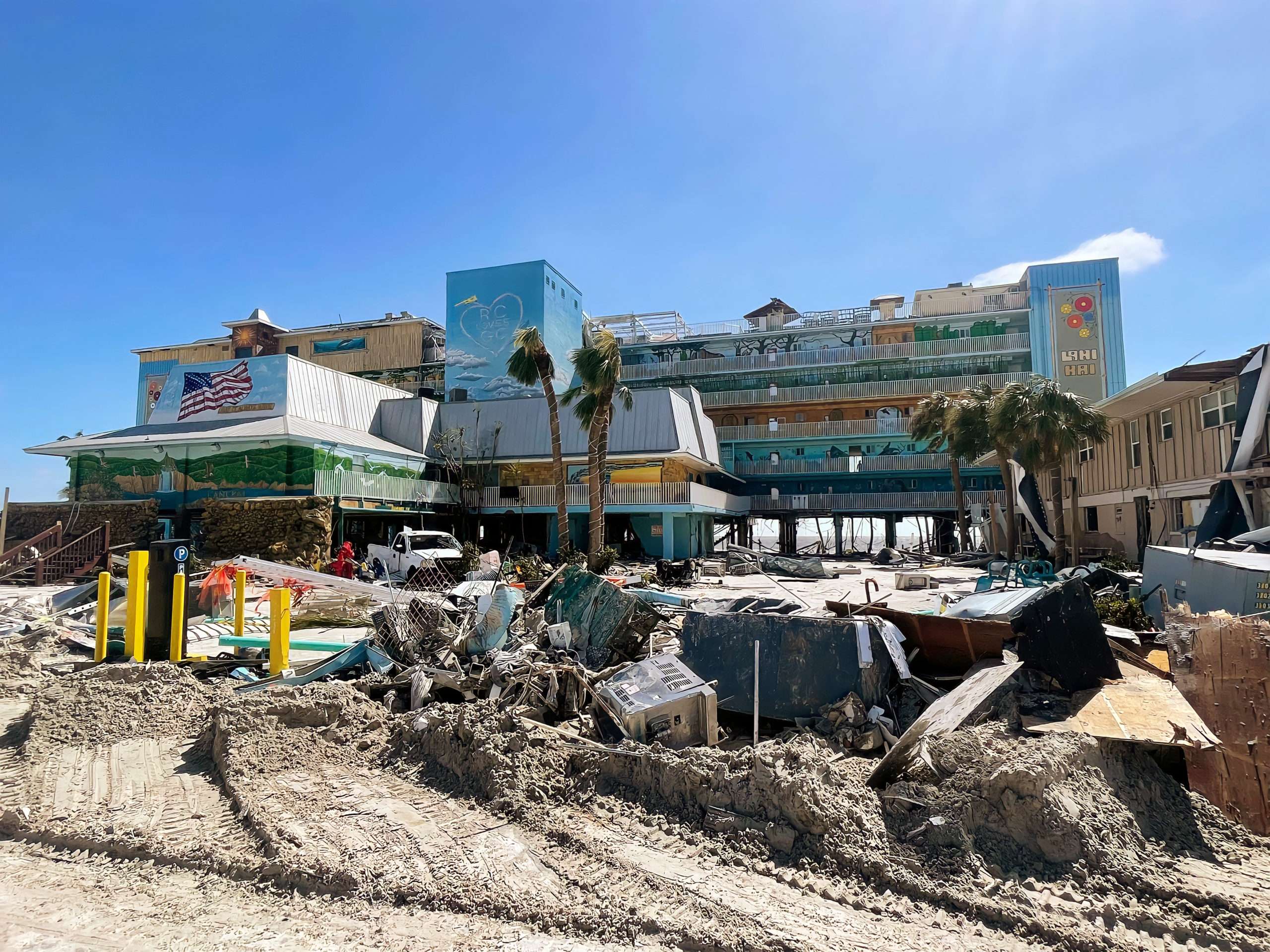
LOSING EVERYTHING
In downtown Fort Myers, Robbie Podgorski loses everything but the clothes on his back, his girlfriend and business partner Jennifer Carbajal and their two Chihuahuas, Rocko and Indiana Jones. The two dogs take a ride on top of Podgorski’s head during Ian’s arrival Wednesday as he half-wades and half-swims from his flooded Dean Park home in Fort Myers across the street to the home of his landlord, which is also flooding. He does not yet know that his business, the Green Cup Café in downtown Fort Myers, is also flooding. He’s losing that, too.
Less than a week later, there are 45 volunteers at the Dean Street café. Some he knows; some are strangers. Little by little, bit by bit, they tear out the soggy flooring and remove the molding cabinetry. They do in four hours what would have taken Podgorski four days to do by himself. In doing so, they rebuild his bridge from hopelessness to hope.
“It was probably one of the most magnificent pieces of human kindness I had ever seen in my 32 years of life,” he says. “I had a bunch of random kids from FGCU who heard our cry for help. We literally had an army of people.
“I’m not going anywhere. I’m going to rebuild. I’m going to reopen. The timeline is something I can’t even begin to think about; this is something I’m going to have to take day by day. But I’ve got no car, no house. Everything’s destroyed.”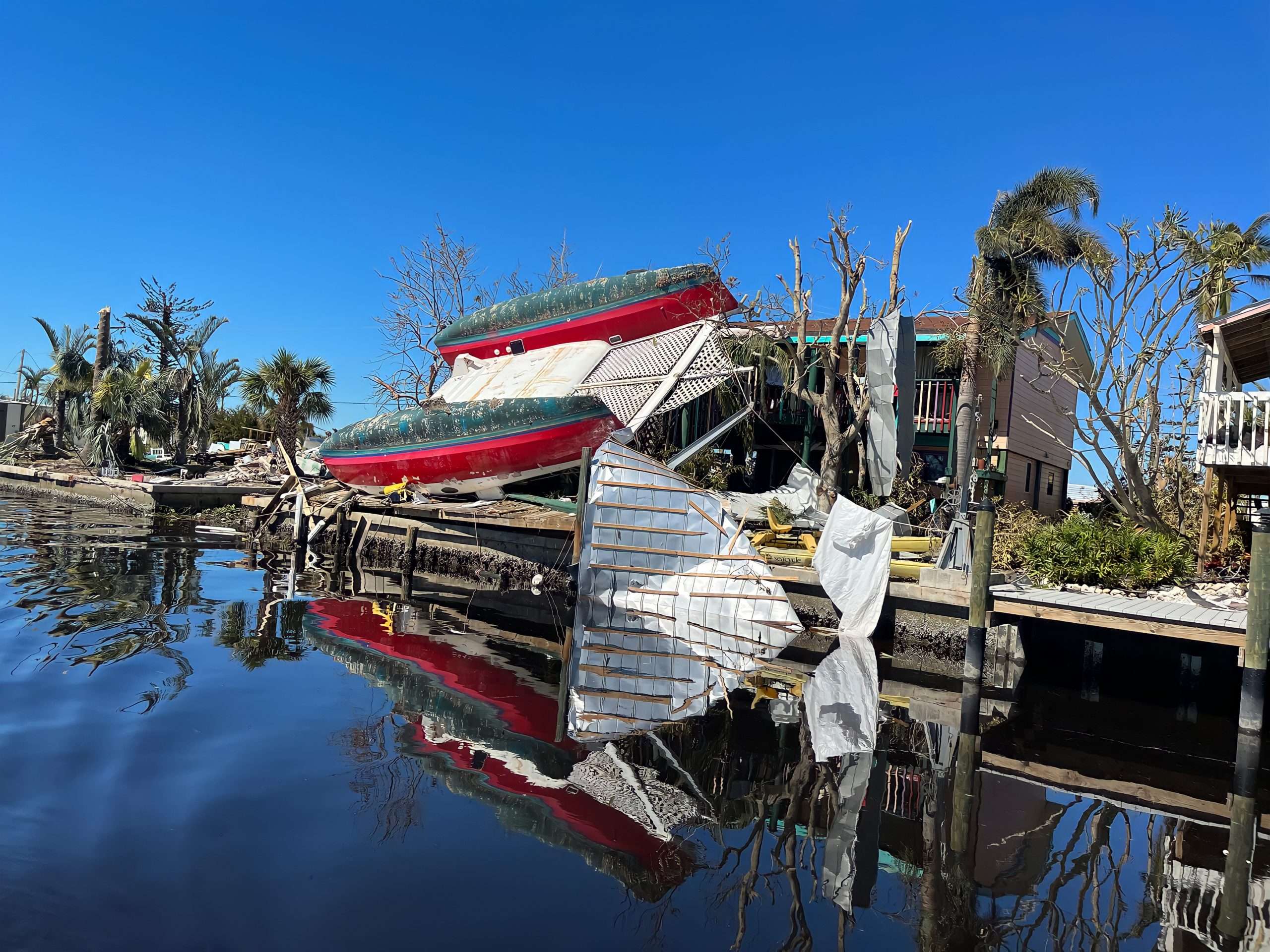
THE ‘WORST-CASE SCENARIO’
Matt Devitt, chief meteorologist for WINK News, Gulfshore Business’ TV partner, follows Hurricane Ian from conception to the end. On Sept. 19, nine days before landfall over Cayo Costa, the National Hurricane Center identifies a tropical wave in the Atlantic Ocean, east of the Windward Islands of the West Indies. Each day thereafter, Ian grows, organizes and strengthens. For a couple of days, it forecasts toward Tampa Bay. On Monday, Sept. 26, Ian starts shifting eastward and southward, taking aim at Sarasota, then Charlotte Harbor, then Sanibel Island, which gets engulfed into the storm’s eye.
Those 155 mph winds were moving north by northwest at just 9 mph.
Devitt and WINK co-anchors Lois Thome and Chris Cifatte stay with as many viewers as they can until about 5 p.m. Wednesday. That’s when Ian’s storm surge takes out WINK’s satellite transmission and starts flooding the newsroom and set, taking the CBS affiliate off the air for about 24 hours. By Thursday night, the station sets up a temporary set near Babcock Ranch at the company’s transmitter. The regular studio doesn’t get back to action until 4:30 p.m. Monday, five days later.
“Hurricane Ian was the worst-case scenario,” Devitt says. “Slow-moving. Large. Almost a Category 5. Landfall on Cayo Costa, which maximizes surge values because of the counterclockwise motion around it.”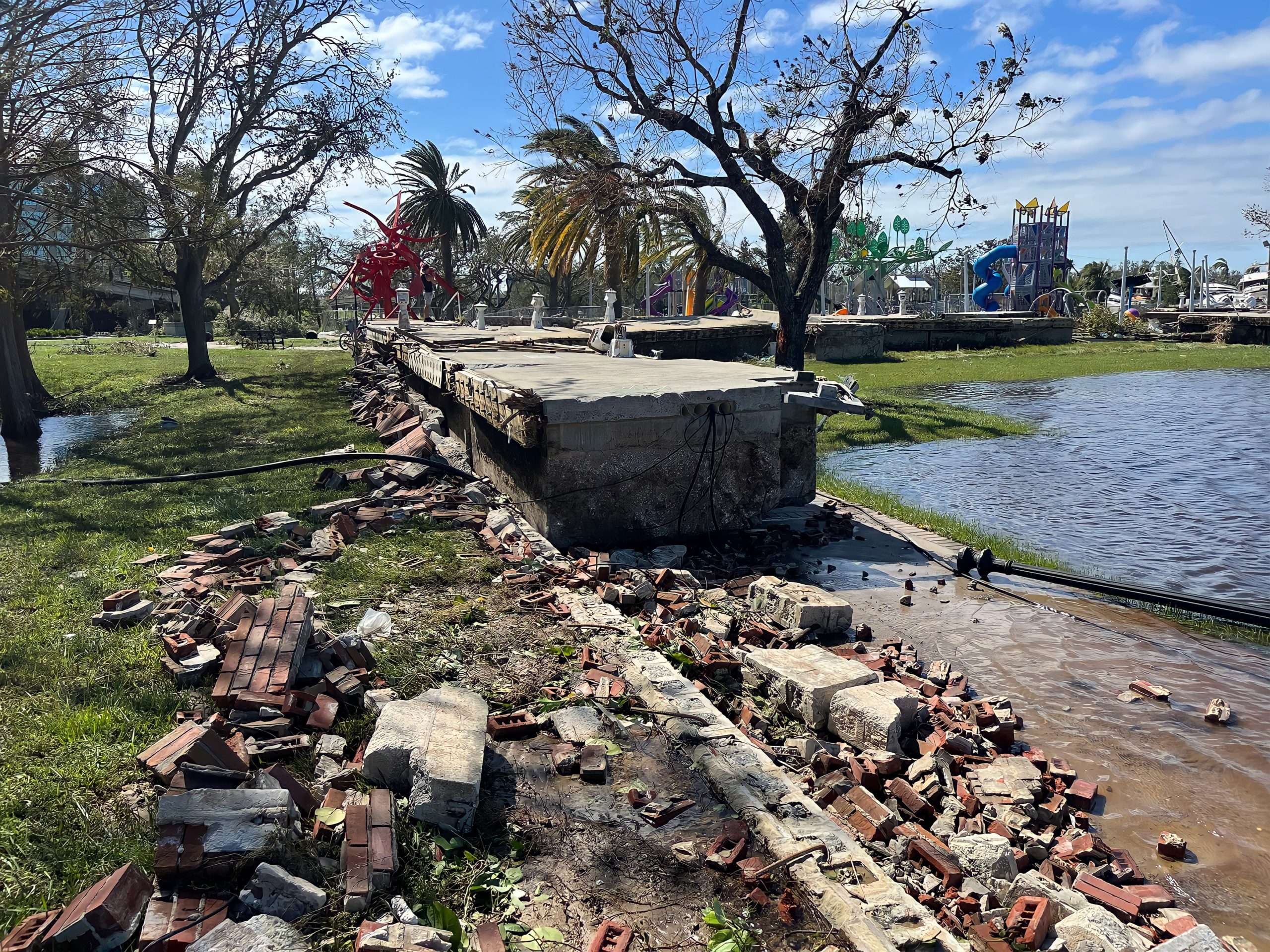
LAST CALL
With Hurricane Ian approaching, Southwest Floridians were eager to claim one last bit of normalcy.
In southwest Cape Coral, George Lukas held a private party preview of his Prime 239 steakhouse Monday night—only to be without power two days later, pushing back the grand opening by 11 days.
On Fort Myers Beach, Edward Ryan drank a beer at the Yucatan bar and restaurant, never guessing it will be among the last to be consumed there for months. Hurricane Ian damages but spares the Yucatan restaurant. But the bar’s wooden totem, about 5 feet high and designed like a Mayan god, embarks on a 2,000-foot journey north from Estero Island, across Estero Bay, somehow floating and blowing and landing near the front door of the Diversified Yacht Services boat storage facility on San Carlos Island, about a third of a mile away.
“I came over the bridge,” Ryan says of his first visit to the beach after the storm. “It all looked like a nuclear bomb went off. The Times Square buildings are gone. The Sunset Grill is gone. The baseball fields on Bay Oaks are in total shambles. The road from the school to the Sea Grape Plaza was broken into pieces.
“There are boats in pools, boats inside of condos. Coconut RV Park is just little bits and pieces of wood. It really looks like a scene from Mad Max or some sort of a war zone.”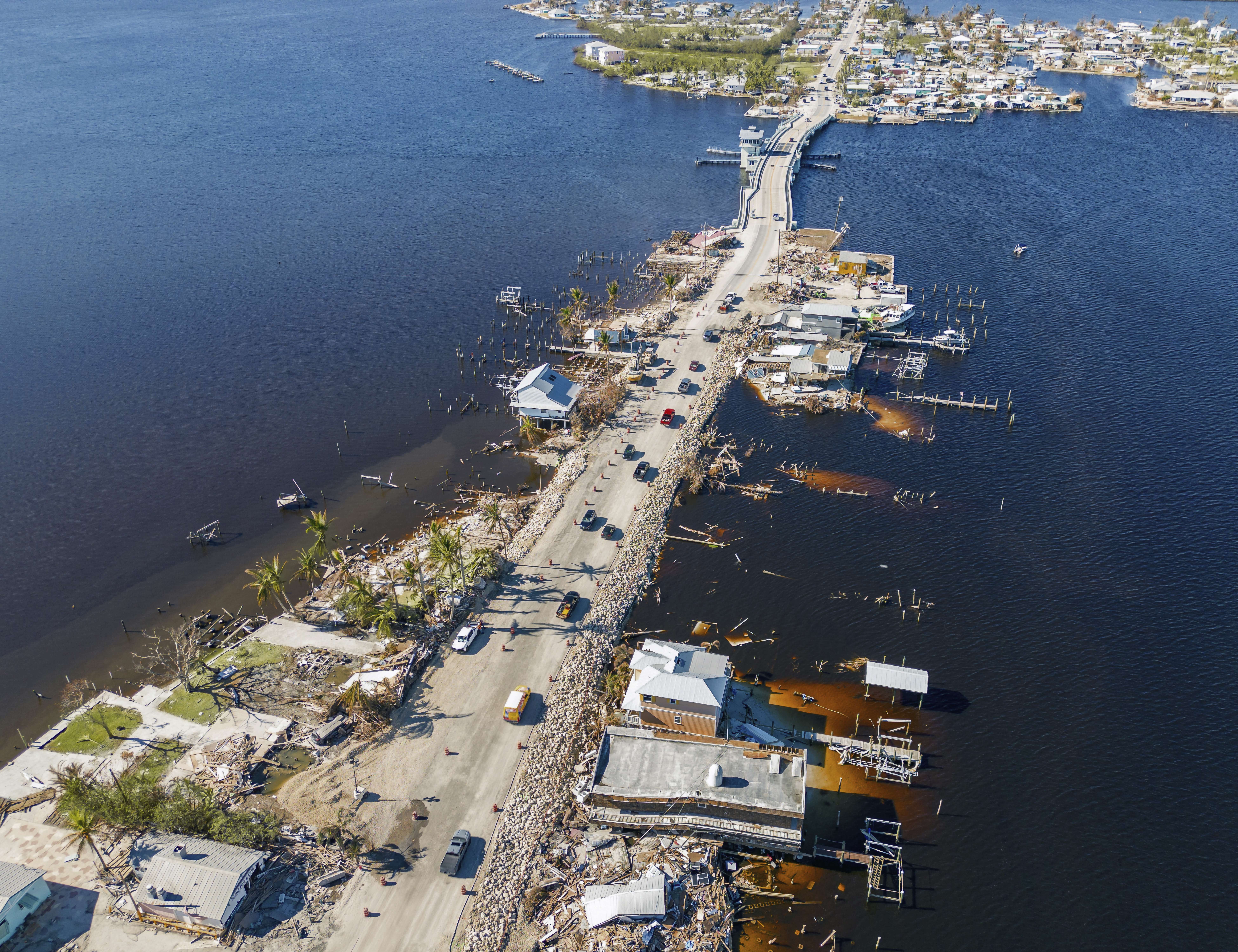
HUNKERING DOWN
Mari Vivet and her 5-year-old Schnauzer, Blue, are by themselves. Her husband, Christian, is in Paris helping his parents move from there to an assisted living home in Nice, France.
Hurricane Ian is bearing down, and on the eve of it slamming into Sanibel, Mari Vivet already loses her power. Her phone quits working near Casa Ybel Street and Periwinkle Way, the middle of the island.
“We have a piling home,” Vivet says. “The garage is on the first story. I was on the second story, and I have a loft, as well. I’m a local, Fort Myers girl. Born and raised here. I decided to hunker down. I hate that word, hunker. And I never want to use the word Ian again. Who names these damn things anyway?”
For almost eight hours, Vivet and Blue hunker down in her upstairs bathroom. When the eye of Ian passes overhead, it brings with it a brief period of calm and even some sunshine. Vivet never senses the calm. She never sees the sunshine.
“It was pretty much the scariest day of my life,” she says. It takes her more than a full week to experience a night with six consecutive hours of sleep. That first week, she keeps awakening, because of the traumatic memories. “My house was blowing like it was a palm tree. It was just swaying. And the wind sounded like a freight train. I thought I might have a tornado. That’s why I didn’t go up to the loft; I was afraid the roof might fly off. I don’t remember the eye at all. I just remember the storm not stopping. I’ve been in many hurricanes. This one would not go away.”
Even after the hurricane winds finally settle down, there’s 12 feet of water below her. By Thursday morning, it recedes to 3 feet deep, enough for her to get on her bike and roll through the water and around the debris, about a mile away to her French restaurant.
Bleu Rendez-Vous French Bistro is still standing. But the interior gets about 5 feet of storm surge. Everything inside
gets ruined.
“It’s our only income,” Vivet says. “It’s unusable for who knows how long it will take to repair. And who’s going to come to Sanibel to vacation? And we don’t have a bridge? And even when we do get a bridge, it’s going to take at least another year to get a more permanent bridge. It’s like Sanibel became Upper Captiva. We are evaluating our plan of action.”
On Saturday, three days after the storm, Vivet decides to take Blue, her beloved dog, and leave.
“I got my little suitcase and my backpack with my laptop, and I started walking down Casa Ybel,” she says. A pickup truck passing by stops. Its passengers put Blue in the front and Marie in the back, and they take her to the boat ramp, where she hitches a ride by boat, passing by the ruined Sanibel Causeway, to Punta Rassa.
There, a good Samaritan—who happens to be the president of one of Southwest Florida’s largest insurance companies, Chapman Insurance Agency—gives her a ride. Brian Chapman harbors Vivet and Blue in his Fort Myers home for a few days, until she finds a condo to stay in for at least the rest of the year.
The bridge to her home is gone, but officials pledge to rebuild it. The inside of her restaurant is in ruins, but the building still stands. Her home needs a lot of work, but it still stands, too. She feels hope.
“Oh, we’re going to reopen,” Vivet says. “We just don’t know when yet. Or where.”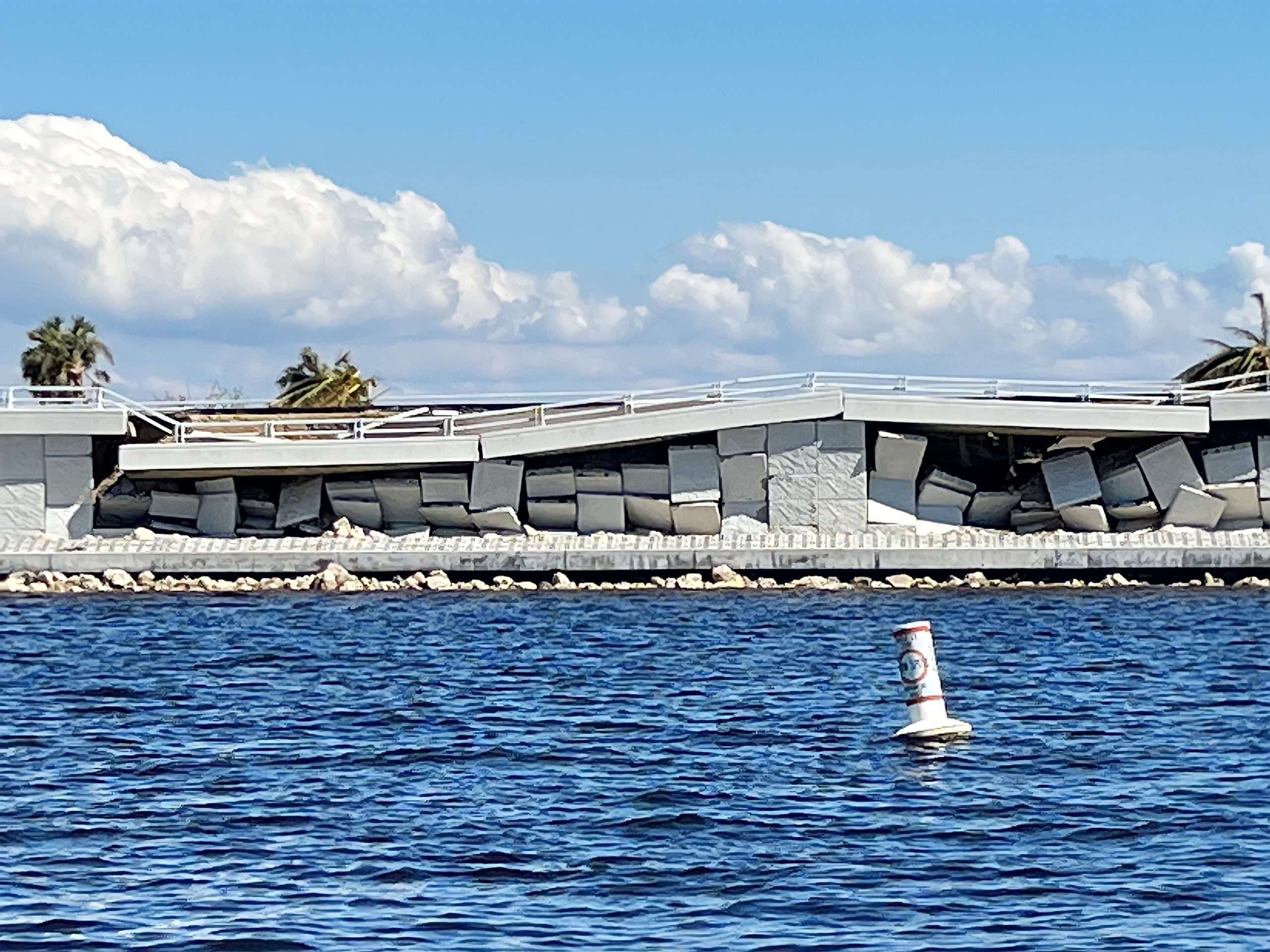
BRIDGES TO HOPE
The Sanibel Causeway becomes the most prominent bridge to suffer major damage in Southwest Florida, but it’s far from alone. New Pass, Big Carlos Pass Bridge and Big Hickory Pass Bridge connect drivers from Bonita Springs to Fort Myers Beach along the southwest portions of Lee County. They all need major repairs.
By the end of the first week after Ian, a makeshift bridge gets built, reconnecting Matlacha to Pine Island. As the mainland is getting reconnected to the islands, the hopelessness keeps being bridged back to hope, as well. On the first day after Hurricane Ian, the smell of fresh pizza wafted about Hendry Street.
Downtown House of Pizza, located on the ground floor of a building built in 1912, never lost power, as it’s connected to the same grid as the Lee County Jail. It reopens for business at noon Thursday. By 1 p.m., DHOP has a line out the door and down the sidewalk.
“It says a lot about our spirit,” says Kevin Schoensee, who owns the Patio de Leon building. “We’re going to work hard. We can’t be beat. We’re all going to come back from this.”
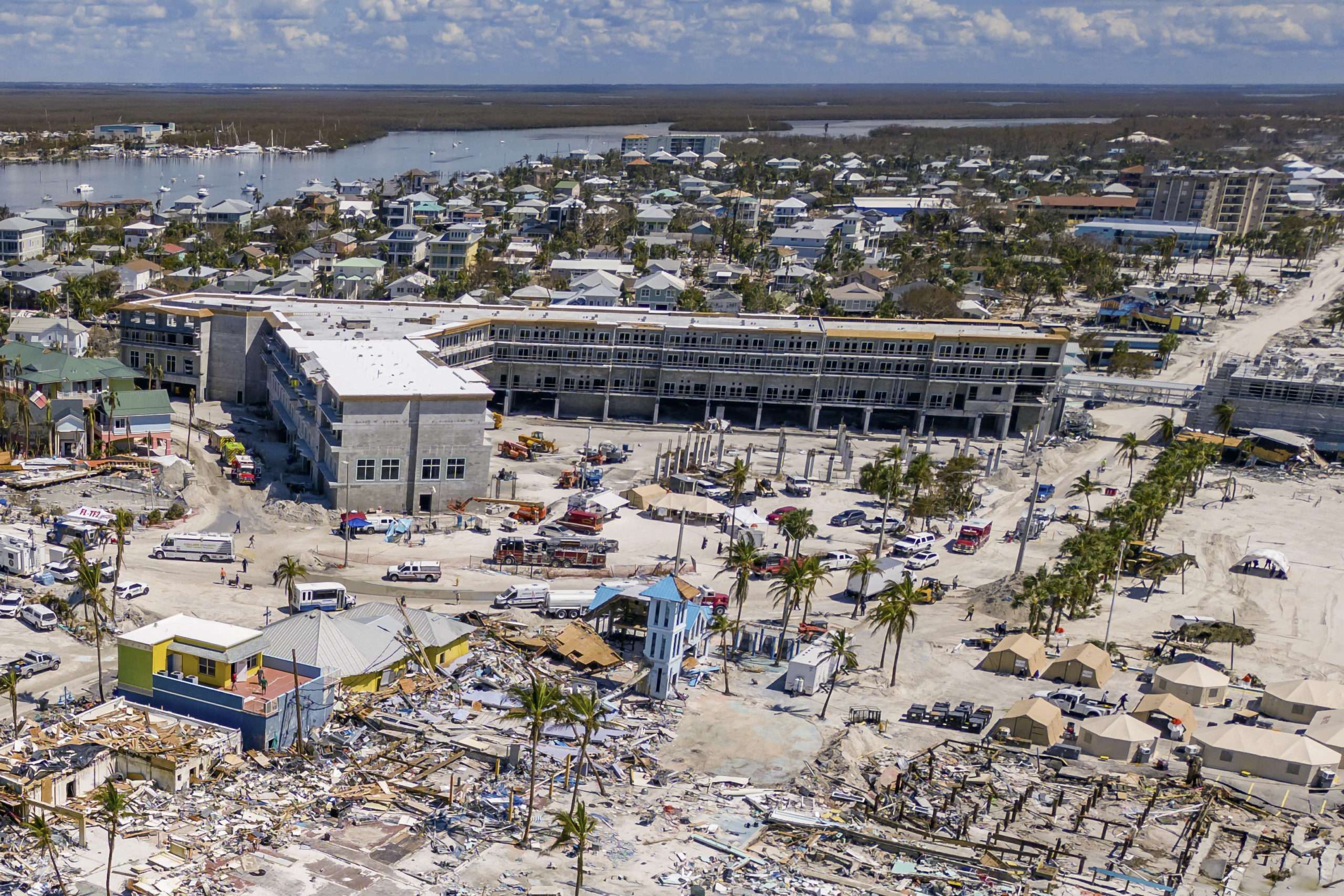
HURRICANE IAN TIMELINE
Sept. 19 — National Hurricane Center identifies a tropical wave in the Atlantic Ocean east of the Windward Islands in the West Indies.
Sept. 21 — Tropical wave moves into the Caribbean Sea.
Sept. 22 — Wave strengthens into Tropical Depression 9.
Sept. 23 — Tropical Storm Ian becomes ninth named storm of Atlantic hurricane season and forecasts to enter the Gulf of Mexico and become a major hurricane. All of Florida except the western Panhandle is in its five-day cone of probability.
Sept. 24-25 — Ian forecasts to become a major hurricane south of Cuba before entering the Gulf. All of Florida except the Naples area and South Florida is in its five-day cone, centered on the state’s Big Bend area.
Sept. 26 — Ian becomes a major hurricane forecasts to make landfall in western Cuba. All of Florida except the Naples area, South Florida and Panhandle are in its five-day cone, now centered on Tampa Bay for a predicted Sept. 29 landfall. Storm surge watches in effect for Gulf Coast. Lee County declares state of emergency.
Sept. 27 — Ian makes landfall in western Cuba as Category 3 hurricane; U.S. landfall predicted Sept. 28 with Fort Myers in center of cone. Hurricane warnings issued for Lee and Charlotte counties; tropical storm warning issued for Collier County, which declares state of emergency. Lee County opens 10 shelters and orders evacuation of barrier islands, low-lying areas and mobile homes. State announces mandatory evacuation orders for coastal communities, mobile homes and low-lying areas.
Sept. 28 — Ian strengthens into a strong Category 4 hurricane with maximum sustained winds of about 155 mph before making landfall at Cayo Costa, a Lee County barrier island between Boca Grande and North Captiva. Hurricane Ian causes catastrophic damage in parts of Southwest Florida, mostly because of flooding from extensive storm surge and rainfall.
Related stories
Hurricane Ian teaches tough lessons on being prepared
Southwest Florida’s long road to recovery from Hurricane Ian



